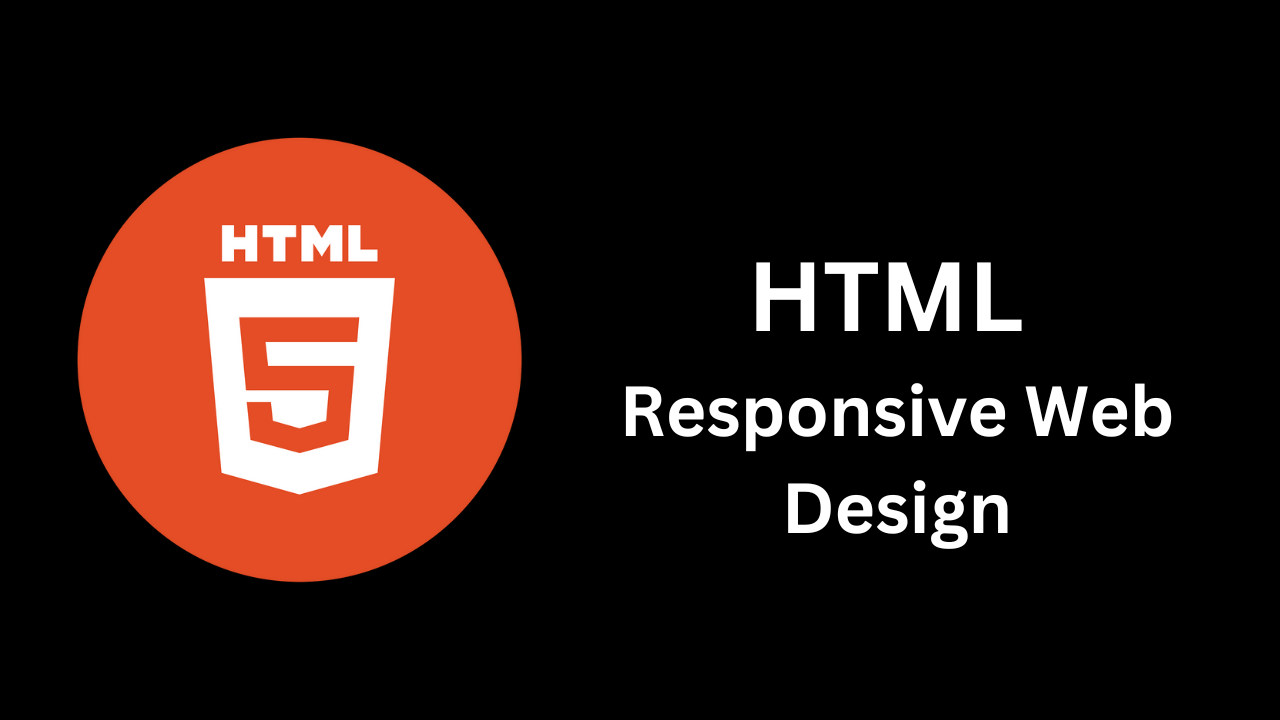Mastering HTML for Responsive Web Design
 Shivani Patel
Shivani Patel
Responsive web design (RWD) is a fundamental approach to web development that ensures websites function well on various devices and screen sizes. With the growing diversity of devices—from smartphones to tablets to desktop computers—creating flexible and adaptable web layouts has never been more critical. This blog post will explore the principles of responsive web design, key techniques, best practices, and tools to help you build responsive websites using HTML and CSS.
What is Responsive Web Design?
Responsive web design is a design approach aimed at creating web pages that automatically adjust their layout, images, and content according to the screen size and orientation of the device being used. This ensures an optimal viewing experience, reducing the need for resizing, panning, and scrolling across different devices.
Key Principles of Responsive Design
Fluid Grids: Instead of fixed-width layouts, fluid grids use percentage-based widths to ensure elements resize proportionally.
Flexible Images: Images should resize within their containing elements, preventing them from overflowing and maintaining their aspect ratio.
Media Queries: CSS media queries allow you to apply different styles based on the device characteristics, such as width, height, and orientation.
Essential Techniques for Responsive Web Design
1. Using Meta Viewport
To ensure your web page scales correctly on different devices, you need to set the viewport using the following meta tag in the <head> section of your HTML document:
<meta name="viewport" content="width=device-width, initial-scale=1.0">
This tag tells the browser to set the width of the page to the width of the device and to set the initial zoom level to 1.
2. Fluid Grids with CSS
Using a fluid grid layout is essential for responsive design. You can achieve this by setting widths in percentages rather than fixed pixel values.
Example:
.container {
width: 100%; /* Full width */
max-width: 1200px; /* Maximum width for larger screens */
margin: 0 auto; /* Center the container */
}
.column {
width: 50%; /* Two columns side by side */
float: left; /* Use float for layout */
}
3. Flexible Images
To ensure images scale properly within their containers, use CSS properties that allow them to be responsive:
img {
max-width: 100%; /* Prevents images from exceeding their container */
height: auto; /* Maintains aspect ratio */
}
4. Media Queries
Media queries enable you to apply different styles based on device characteristics. Here’s an example of using media queries to adjust the layout for different screen sizes:
/* Default styles for mobile devices */
.container {
flex-direction: column; /* Stack elements */
}
/* Styles for tablets and larger devices */
@media (min-width: 768px) {
.container {
display: flex; /* Use flexbox for layout */
flex-direction: row; /* Align elements side by side */
}
}
5. CSS Flexbox and Grid
Using CSS Flexbox and Grid layout systems can greatly simplify responsive design.
- Flexbox allows for one-dimensional layouts, making it easy to align and distribute space among items in a container.
Example:
.container {
display: flex;
justify-content: space-between;
flex-wrap: wrap;
}
- CSS Grid is excellent for two-dimensional layouts, providing more control over rows and columns.
Example:
.container {
display: grid;
grid-template-columns: repeat(auto-fill, minmax(300px, 1fr)); /* Responsive columns */
gap: 20px; /* Space between items */
}
Best Practices for Responsive Web Design
Mobile-First Approach: Start designing for smaller screens first, then progressively enhance for larger screens. This approach helps prioritize essential content and improves load times.
Optimize Performance: Use responsive images (like
srcsetand<picture>tags) to serve appropriately sized images based on device resolution and size. This reduces loading times and improves user experience.Consistent Testing: Regularly test your designs across various devices and browsers. Emulators and developer tools can help, but real-device testing is crucial for accuracy.
Limit Fixed Positioning: Avoid using fixed widths and heights in your CSS. Instead, opt for relative units like percentages, ems, or rems.
Use CSS Frameworks: Consider using CSS frameworks like Bootstrap or Foundation, which offer pre-defined classes and components for responsive design, saving you time and effort.
Tools for Responsive Design
Chrome DevTools: Offers device mode for testing responsiveness and simulating different screen sizes.
Responsinator: A simple tool to see how your site looks on various devices.
Figma/Adobe XD: Design tools that allow for responsive design mockups and prototypes.
BrowserStack: A cloud-based platform for testing websites across various devices and browsers.
Conclusion
Responsive web design is essential for creating modern, user-friendly websites that adapt to a variety of devices and screen sizes. By utilizing HTML, CSS techniques, and best practices, you can ensure that your web pages provide a seamless experience for all users.
With the right tools and strategies, you’ll be well on your way to mastering responsive design and enhancing the overall usability of your web projects. Happy coding!
Subscribe to my newsletter
Read articles from Shivani Patel directly inside your inbox. Subscribe to the newsletter, and don't miss out.
Written by
